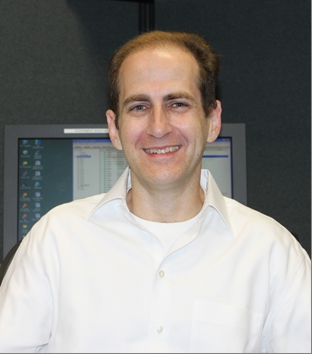Q & A with NHC - Steve Feuer
 Steve Feuer
Steve Feuer
Meteorologist
Chief Aerial Reconnaissance Coordination All Hurricanes (CARCAH) Unit
National Hurricane Center
By Dennis Feltgen
Public Affairs Officer
NOAA Communications & External Affairs
National Hurricane Center
Most of the public does not hear about this office. But the hurricane specialists would not be able to be successful without you.
Yes, pretty much. We have all of the raw data coming in from the hurricane hunter aircraft. We have to supply it to the specialists so that they can get the truth of what's going on with the winds and intensity of the storms.
This does not seem like a job that one would have dreamed about in high school of having someday. How did you get to this position?
In my previous job at NOAA's Hurricane Research Division, I did quite a bit of work coordinating the ground operations for research missions done with the NOAA aircraft. I also had extensive experience analyzing aircraft observations from some of these missions and processing and archiving dropwindsonde data.
You had an early interest in meteorology?
I was one of those kids that wanted to be a meteorologist. By the time I was in 5th grade, I had decided I wanted to major in meteorology in college. It wasn't any particular weather event that triggered it, just the fascination with daily sea breeze-induced thunderstorms we get around here and the emphasis on tropical cyclones in the local media.
You're a native South Floridian?
I was born and raised here. My family's been in Miami since 1940. I was always fascinated with the weather here and the publicity surrounding the hurricanes.
Did you stay home for college?
No, I actually went to Penn State University. I had been in South Florida all of my life and it was a bit tenuous in the Miami area during the 1980s, so I decided to go out of state. I took a real interest in PSU's student autonomous forecasting organization, Campus Weather Service. I got involved in my freshman year, and by the time I reached my senior year I was president of that organization. We did forecasting for a dozen or so small radio stations across Pennsylvania and the University as well.
Did you want to stay up there?
I was contemplating it, but the cold weather was giving me some health issues so I wanted to come back to South Florida. Dr. Greg Forbes, who is now the severe weather expert at The Weather Channel, was a professor at Penn State. I asked him if he had any connections in the area, and he was able to help steer me to a summer employment at the Hurricane Research Division (HRD) before my senior year. I had just taken a course in FORTRAN and I was able to put it right to use there. It was a wonderful experience. I must have made a good impression because, following graduation in 1988, I was hired full-time there. I started doing some work with three-dimensional analysis of dropwindsonde data sets using a newly-developed nested scheme.
How did that get you to NHC?
I became more actively engaged in analyzing data sets collected from aircraft experiments during HRD's field program, in which many dropwindsondes were deployed. I also got involved with post-processing the actual dropwindsonde data itself received off of the aircraft. Back then, it was the old probes, which were far inferior to the GPS dropwindsondes we have today, but it was all we had. When the GPS dropwindsonde era arrived, and NOAA acquired the G-IV aircraft, I got involved in post-processing them as well. I additionally took on a variety of other tasks entailing programming, meteorological quality-control, and analysis. I decided to leave HRD at the end of 2006. I got a call shortly thereafter from Dr. Chris Landsea, who I previously worked with at HRD and was now the Science Operations Officer at NHC. He told me there was an opening here at NHC in the CARCAH (Chief Aerial Reconnaissance Coordination All Hurricanes) unit. I applied for the job and became employed by the 53rd Weather Reconnaissance Squadron as one the unit's three Air Force civilians in August 2007.
Were you familiar with CARCAH?
Oh yes, and I had known the head of that unit, John Pavone, for several years. We had four Marlins tickets in the inaugural season (1993), and John was one of 22 people vying for those tickets though that season. I also got to know him better when I would come over from HRD to help him with the data being sent by the NOAA aircraft during certain research missions. The biggest challenge was learning the protocols and procedures of the Air Force operational missions and how they differed from those of the NOAA aircraft.
What are your interests outside of work?
I am an avid sports fan and follow the local professional teams. At one point, I had season tickets to all four major regional franchises, which were shared among other colleagues. Currently, I just have season tickets for Miami Heat basketball and Florida Panthers hockey. I am also a big music buff and enjoy seeing live concerts and performances. On a personal level, I am quite involved with a personal fitness routine, which I have done almost daily for the past 23 years. I have also been active with the local Penn State Alumni Association chapters and have previously served as activities coordinator, vice president, and president of the Miami chapter. I additionally originated the annual South Florida Big Ten alumni picnic in 1998 and continue to coordinate it along with another Penn State alumnus. We've had turnouts of more than 150 people in recent years.
Send comments to: NHC.Public.Affairs@noaa.gov
Return to Q & A index of stories


